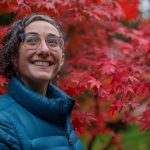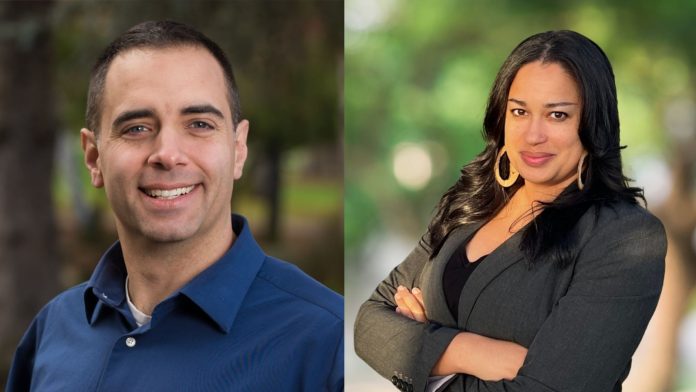
Tacoma Mayor-Elect Anders Ibsen and incoming Councilmember Latasha Palmer shared their early plans.
One of the reasons newly elected Tacoma City Councilmember Latasha Palmer thinks she won is that Tacomans were looking for “something different.”
“The results came as a pleasant surprise,” she told The Urbanist. “I think it really served as reassurance that the voters are … looking for not the status quo and something that’s going to be a little bit more effective.”
Palmer isn’t the only “different” Pierce County candidate to win, either. Anders Ibsen beat out sitting councilmember John Hines, even though Hines outstripped Ibsen in funding by at least $100,000.
Both candidates are strong advocates for middle and supportive housing, and transit-oriented development and earned the endorsement of The Urbanist Elections Committee. They also told The Urbanist they want to tackle traffic safety, which Laura Svarncarek, executive director of Tacoma On the Go, said is much needed and within reach with the right approach.
Both leaders bring direct housing experience to the table. Palmer is a founding board member of Aya Community Land Trust, focused on preventing displacement and building wealth for Pierce County’s Black community. Ibsen is a managing broker at Windermere real estate. He also served as a Tacoma City Councilmember from 2012 to 2019.
Housing affordability
Tacoma has been chipping away at its affordable housing crisis for years, including implementing phases of its Affordable Housing Action Strategy and, more recently, updating its Comprehensive Plan to increase housing opportunities citywide, in compliance with a state mandate that went into effect this summer. The City’s plan targets about 59,000 net new homes by 2050.
A major part of this plan is called Home in Tacoma, a reform allowing a broader range of housing in former single family zones. The change is intended to foster the creation of “middle housing,” ranging from duplexes to townhomes to small apartment buildings. Proponents argue middle housing will promote family-sized housing attainable to middle-income households, foster walkable neighborhoods, support local businesses, and encourage transit use and upgrades.
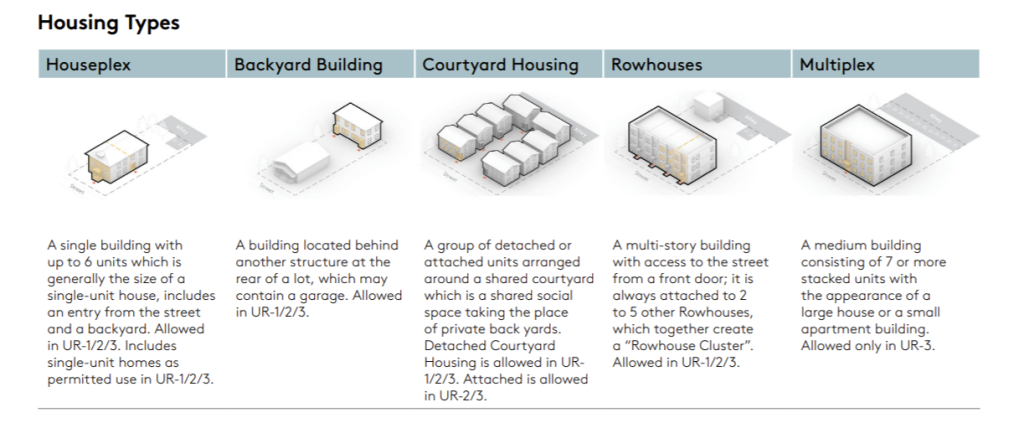
Palmer told The Urbanist that a major part of her campaign that appears to have resonated with voters is focusing on housing from both an affordability perspective and a “housing first” approach to homelessness.
“We see what’s happening now with a camping ban and things like that aren’t working,” Palmer said, referring to the city’s recently killed ban on camping that the council enacted in 2022. “[These policies are] just moving the problem from one place to another, and we’re seeing people need more options, as far as shelter goes. When that happens, it’s effective in other cities.”
She said her campaign approached affordable housing “from a place of permanently affordable housing — not just housing that stays affordable for a couple years and then goes back to the market [rate], but other solutions that have had success.”
Ibsen attributed his victory to his campaign’s focus not only on affordability, but on community collaboration. While door-knocking, one of the things he recalled hearing over and over again was concern over a responsible regional approach to housing stability and homelessness.
“People have concerns about […] having a real plan for affordability and economic development,” Ibsen said. “But just as important as addressing the issues was the level of follow-through, attentiveness and collaboration. I think that’s what people are really hungry for, and it’s going to be a major priority of my administration.”
Ibsen supports Home in Tacoma — but he doesn’t think the city should stop there, and should in the long term, pursue social housing.
While he admitted the city doesn’t have the same tax base as some other cities to support such an initiative, Ibsen doesn’t see that as an insurmountable obstacle. In addition to having “a more in-depth conversation” with existing non-profit housing authorities and Pierce County, he believes that the city should work more closely with the Puyallup Tribe.
“The Puyallup Tribe has done some amazing work diversifying their portfolio,” Ibsen said of the tribe’s different property ventures, such as waterfront restaurant Woven, and an in-progress shipping terminal in the Port of Tacoma. “Integrating our partnership with them for economic development and community building is something I’m really going to focus a lot on because the Puyallup Nation are great neighbors. I’m very, very much committed to not simply undoing the mistakes and the injustices of the past, but working together to build a better future for all of our community, tribal and non-tribal.”
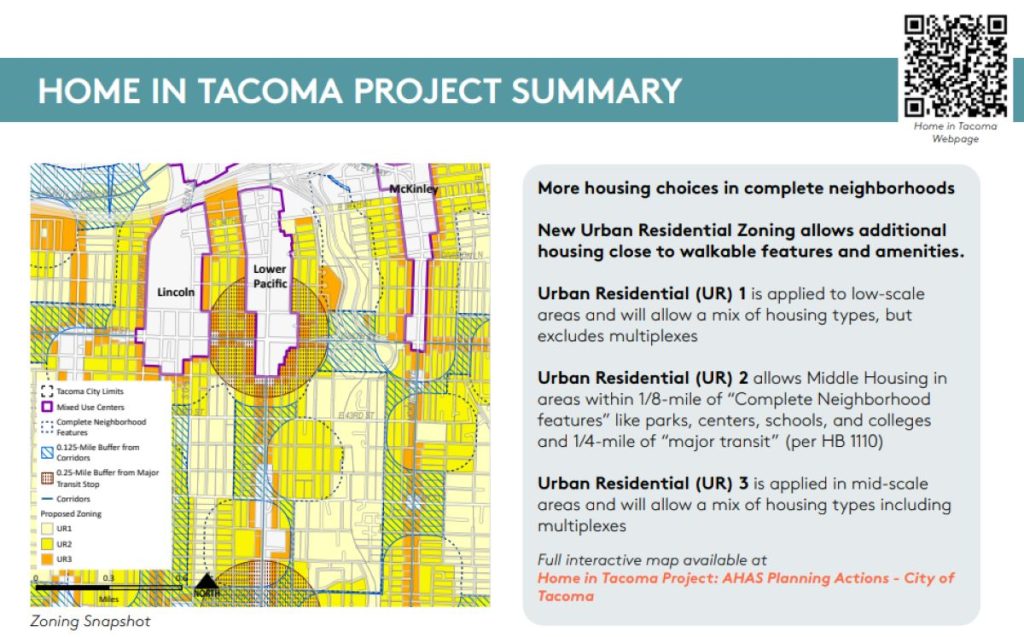
Focusing in the nearer term on Home in Tacoma, Ibsen said the city should seek to encourage affordability through the land use and building codes, in cooperation with the Board of Building Appeals and community groups. His goal is to “ensure that we’re aligning the standards we have for the actual physical improvements themselves, along with the land, so that we’re doing everything we can to to encourage affordability [and] as many meaningful options for homeowners and builders and others as we can, while also being cognizant of our environmental standards and not sacrificing those and other important social goods.”
He also zeroed in on ensuring that there are both enough incentives for developers to create affordable housing, and that they are actually serving their purpose.
“If we’re trying to encourage more ADUs [accessory dwelling units] or small multifamily missing middle conversions in our single-family areas, are there incentives that we can imagine for just average homeowners?” he said. He added that incentives should be available to households to allow them to age in place without “breaking the bank” and create more multi-generational households.
Palmer said that ideas like community land trusts and social housing were key elements that her campaign proposed, and that they built on things she heard the community asking for.
“The city has done studies in the past as to what can we do, and things like land trusts have come up in those studies,” Palmer said, referring to information included in Affordable Housing Action Strategy work, “but we just haven’t followed through, and I think people are ready for follow-through.”
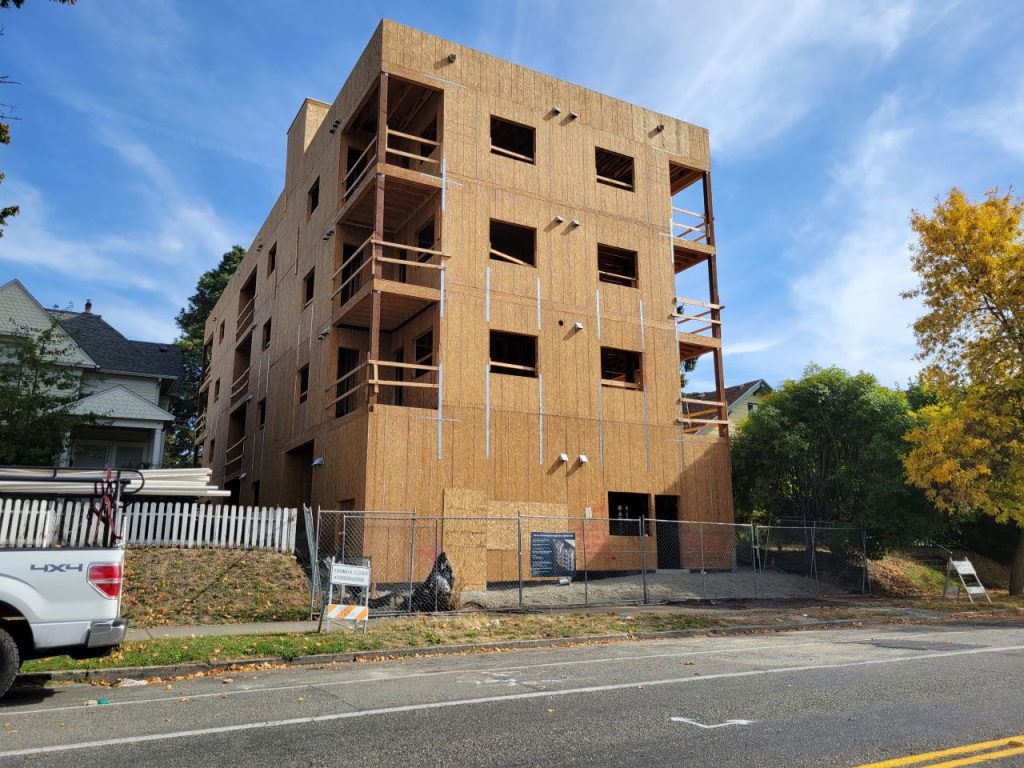
Palmer said that she is particularly excited about Home in Tacoma, because it opens up several middle housing options for people who already live and want to stay in Tacoma.
“There’s so much opportunity for the city to support our residents in creating additional housing for their youth that are becoming young adults and find it difficult to afford a place on their own,” Palmer said. “You can build more housing in the backyard for your son or daughter. Same thing with the folks that are taking care of their elders, and having that opportunity to move closer to home.”
Palmer also sees the need to create housing incentives for community members, not just developers, particularly so that elders — who are increasingly experiencing homelessness and who are bearing much of the brunt of rising health care costs — can have stable care and housing.
“Home in Tacoma reforms made it so that […] it should be easier to make more middle housing, when it comes to things like ADUs,” Palmer said. “It’s making sure that those allowances in the zoning are accessible to our everyday residents and not folks just coming in and wanting to take advantage of those changes from the outside.”
Traffic safety issues
Tacoma’s traffic collision rate, as well as traffic fatalities, remains exceedingly high, with more than 4,000 crashes reported in 2023 and in 2024. The city is currently on track to exceed that number again this year, according to the Washington State Department of Transportation’s traffic crash portal. Dozens of those crashes are fatal, and hundreds result in significant injuries.
In a special election this April, the City came up short in passing the Tacoma Streets Initiative II, a levy that would have funded investments in safer streets, through increased maintenance work, spot safety fixes, and broader street redesigns that would have included pedestrian crossing upgrades and traffic calming features. Voters nixed the levy, which called for a 0.5% increase in utility taxes and a property tax increase of 5 cents per every $1,000 of assessed property value.

Svarncarek said that even though this measure failed, how to make Tacoma’s streets safer is at the forefront of voters’ minds, particularly with a tight budget and the city facing a significant budget shortfall. She said that it is “critically important” for the new council to bring the levy back to voters, and that the ballot language needs to be clearer.
“I think people were confused by the ballot language, and we all can come together to do a better job to articulate what this is and what it will do for folks, especially how the city has been able to increase the value of taxpayer dollars through accessing grants,” Svarncarek said, referring to the city’s ability to leverage matching funds the tune of $2.27 for every $1 approved by voters. “I think this is an example of how the city can really well-steward taxpayer dollars for issues that are very, very critically important. My hope is that the council and Mayor Ibsen will come out in significant support, and really get out there and speak to the people of their district and the city as a whole.”
She also pointed out that even though there was a one-time allotment of real estate excise tax (REET) towards the city’s Vision Zero plan, it wasn’t enough. Last year, the city council cut the plan’s budget by 90%.
“We need a clear plan on how we’re going to maintain at least the current amount of funding for Vision Zero in the next biennium, otherwise, we lose any momentum that we have,” she said. “Having dedicated Vision Zero dollars gives the city flexibility, to be able to fix things as they come up and be ready to move on bigger issues.”
Palmer said that even though Tacoma residents know traffic safety is an issue, they don’t necessarily want to shoulder another cost. While she is not opposed to resident-funded levies, she said that it “seems like there could be already existing dollars that we can move from some of the other things we’re doing in the city over to support that type of safer infrastructure.”
“I would be open to looking at that first and seeing what our opportunities are, how to make the dollars that we already have more effective,” Palmer said. While Tacoma residents know that money for safer streets has to come from somewhere, she said, “from what I’ve seen knocking doors and talking to folks, people aren’t very secure in the idea that what they’re paying for now in their taxes is going towards the things that they would like to see it go towards. I think there’s a lot of work to be done building trust before we would put something on the ballot again to pay for these types of things.”
She also floated the idea of other revenue streams that the city could consider, such as surtaxes on blighted buildings — “we could maybe bring in some more revenue that doesn’t just fall on the backs of our working folks.”
Ibsen said that one of the reasons the measure failed is because “we weren’t ambitious enough and we weren’t broad enough in who we were talking to.”
If the city were to “take another bite at the apple,” he said, the conversation would have to be multijurisdictional and multifaceted — in other words, not just approached as a roads package, but as a package that demonstrates infrastructure meant for social good. This includes activating neighborhood business districts and areas for transit-oriented development, bringing greater connectivity to downtown Tacoma, and making school and parks spaces safer.
“How can we achieve as many multiple mutual wins as possible, when we look at these things, instead of thinking of it as a monolith, like a street measure, and thinking more multilaterally?” Ibsen said. “How can we use infrastructure to activate space, enhance affordability, make neighborhoods safer and cleaner and just increase the wealth building opportunities for it?”
Public transit
Pierce County transit has faced consistent budget woes that bus riders, in particular, feel, as they wait for infrequent buses along county routes. Svarncarek said that while Pierce County Transit is a “scrappy agency,” they still receive half the level of local funding as peer agencies in the region. Without additional funding, service improvements will be minimal.
In addition to successful advocacy for public transit funding, Svarncarek said, local leaders need to be “fully invested in and understand the importance of it and be able to communicate to their districts and to the city as a whole why this matters, even for people that don’t ride the bus every day.”
“Pierce Transit … [gives] people access to opportunities, jobs, healthcare, community — all of these things, that are the health of our community as a whole,” Svarncarek said.
The agency has been mulling a ballot measure that would bring additional funds to transit, and Svarncarek said she would support such a measure, but added that “we all want to see that tax dollars are used smartly.”
“What we hear time and time again from folks out in the community is that they want to see higher [bus] frequencies, that go later into the evening and, especially, better service on weekends and weekend evenings,” she said. “What I would love to see start to come back into the conversation is bus rapid transit service or high capacity transit service in general — but that currently is not part of Pierce Transit’s long range plan due to those funding constraints.”
Pierce County’s bus rapid transit (BRT) plans died on the vine a couple years ago, due to escalating costs and budget constraints. The County replaced it with the Steam Community Line, an express bus which does come with BRT-esque amenities, such as real-time arrival information.

“As we look at what it could mean to bring BRT back into the picture, I think it’s a really good thing to ask, ‘How can we start including those amenities throughout the system even without full BRT lines?’” Svarncarek said. “How can we slowly build up?”
Thanks to her ridealong interview with Tacoma On the Go, Palmer specifically noticed that bus schedules in traditional bus stations along Pierce County Transit’s routes were not regularly posted. She said they need to be, and also said that she noticed several smaller issues that need to be addressed to create a better transit experience.
Again, though, she wouldn’t want to put funding transit on Tacoma residents without looking at other funding sources, first.
“Everything’s so tight. Some of the things that the money has been going to in times of more abundance, we need to look at those things and see [if we can] allocate those […] so that our basic needs and the more pressing issues are being addressed,” Palmer said. “I think we look at the budget and see where we can move things around. And then if we have to, as a last resort, put an initiative on the ballot and bring people along with that process and have them understand [that] we tried to find the money in these other areas, but it’s not there. […] I say, yes, after other things first.”
Ibsen acknowledged that “transit is woefully underfunded,” and that “we have to have a thorough conversation about what does it mean to sustainably fund the services people care about, while also being mindful of the budget constraint that a lot of working families are facing in Tacoma.” He said he would work closely with Pierce Transit, in his role as mayor and try to be as forward-facing as possible to gather community input.


